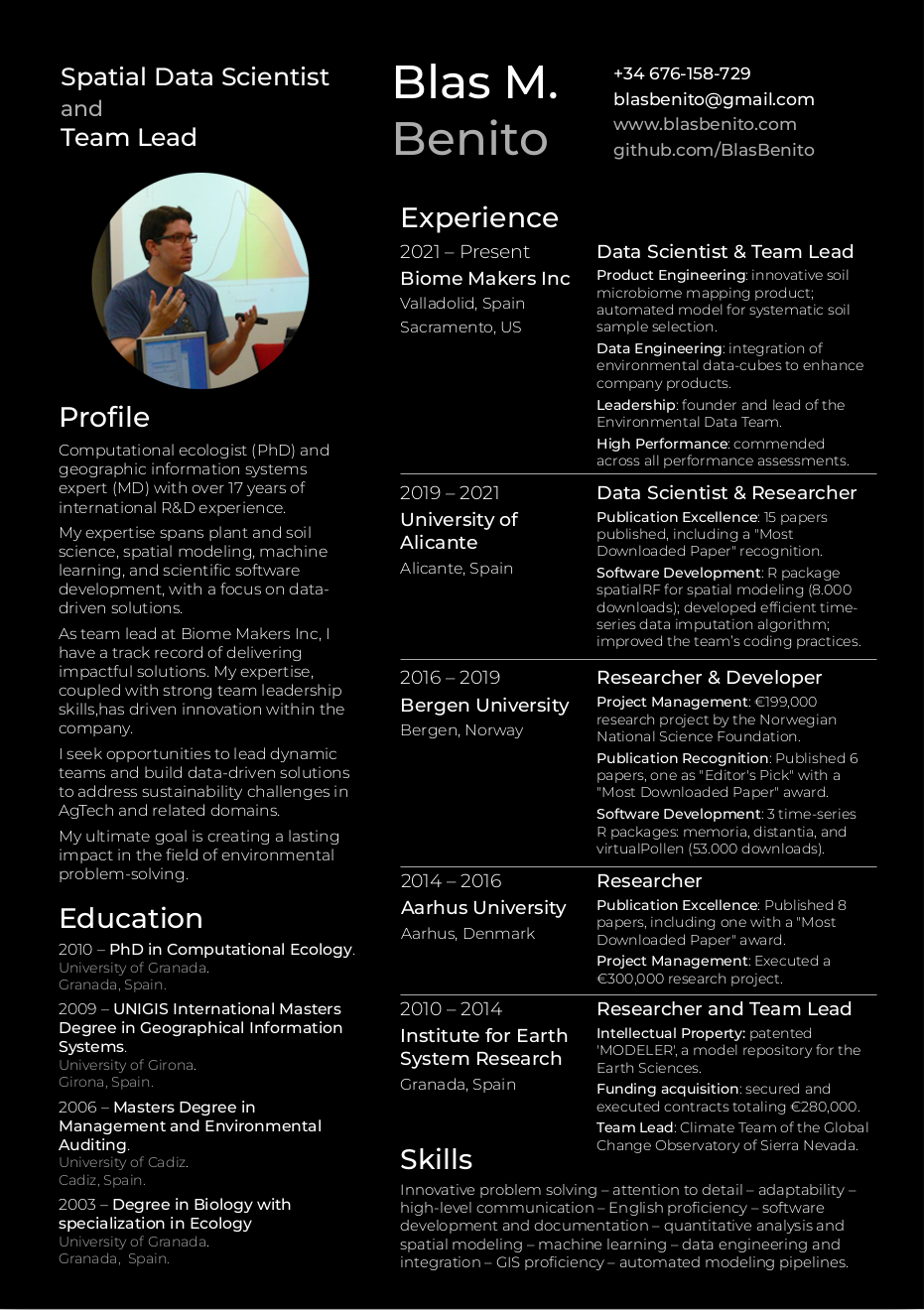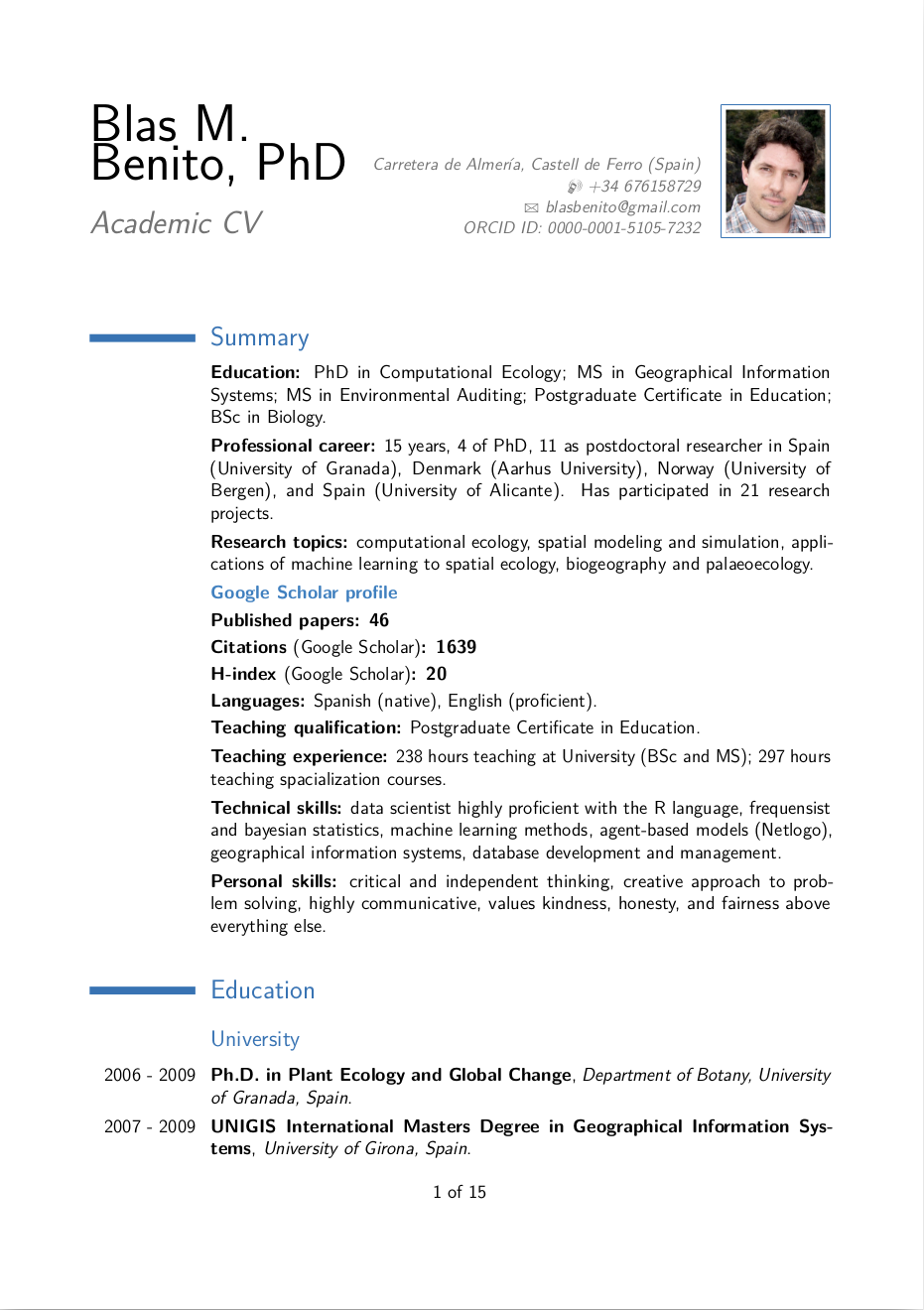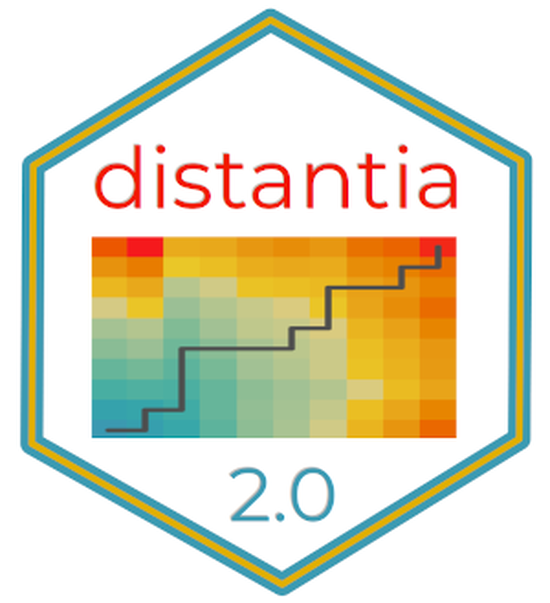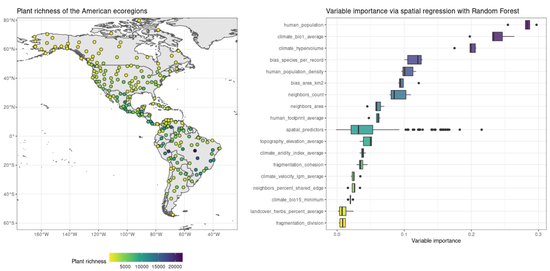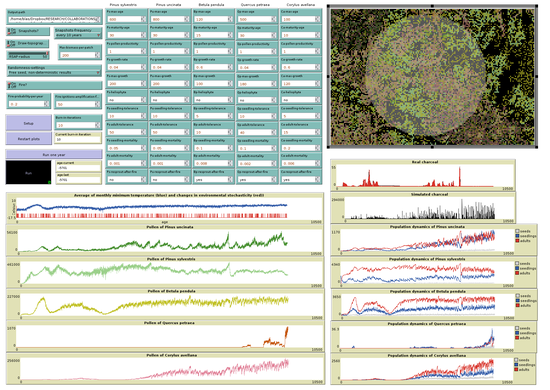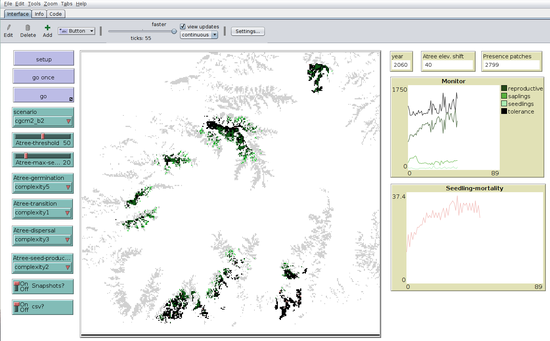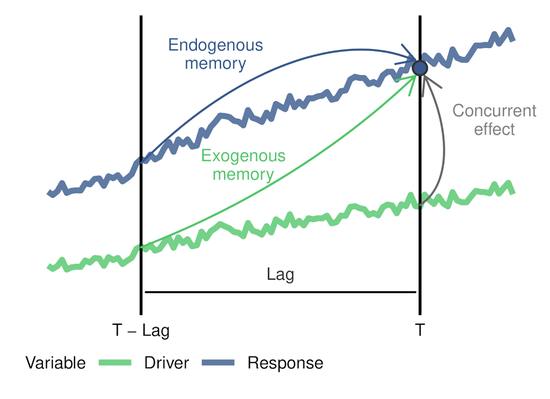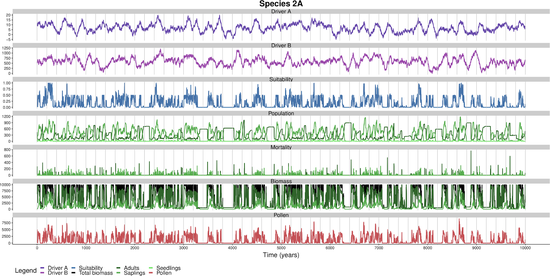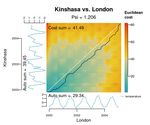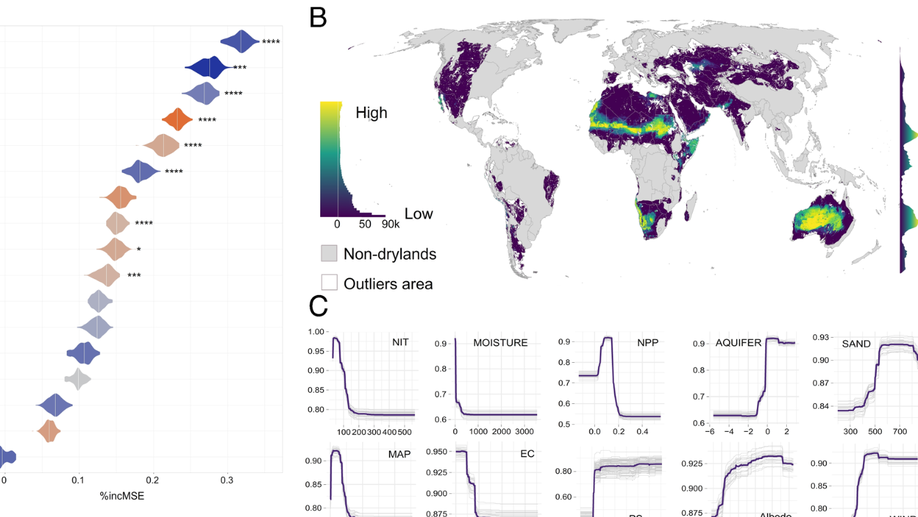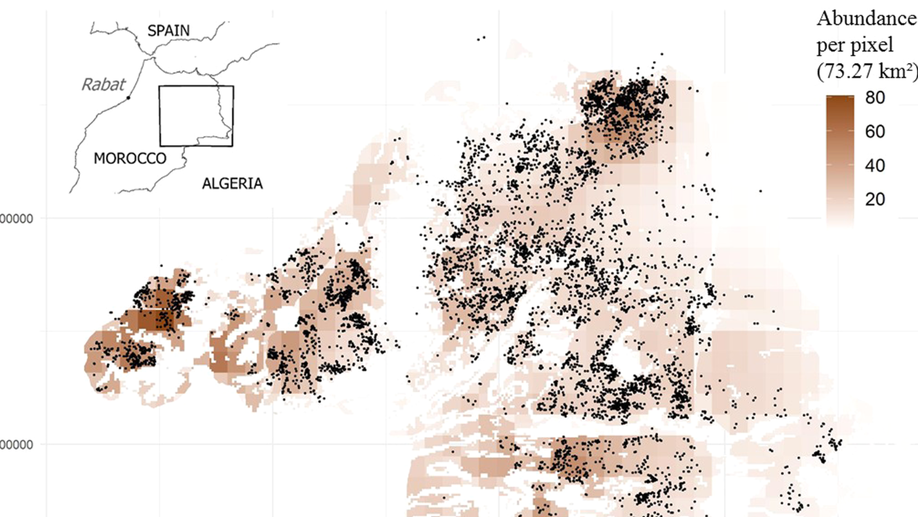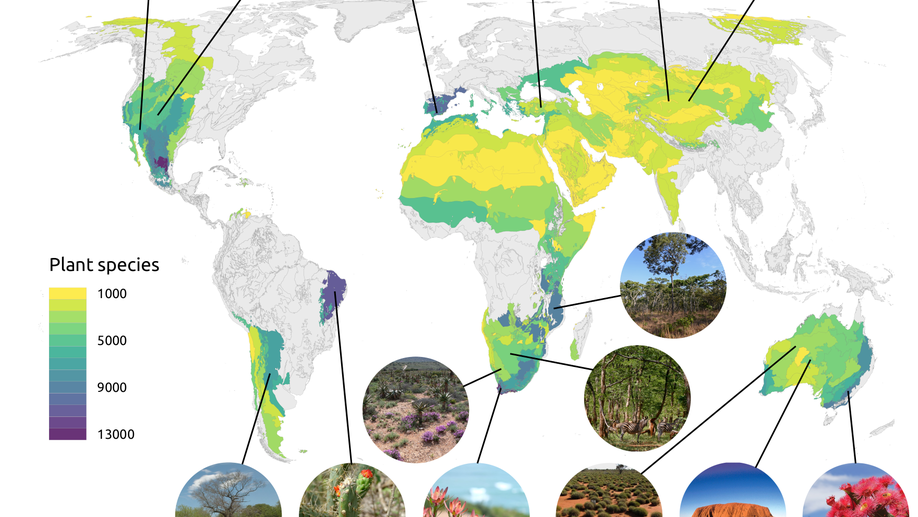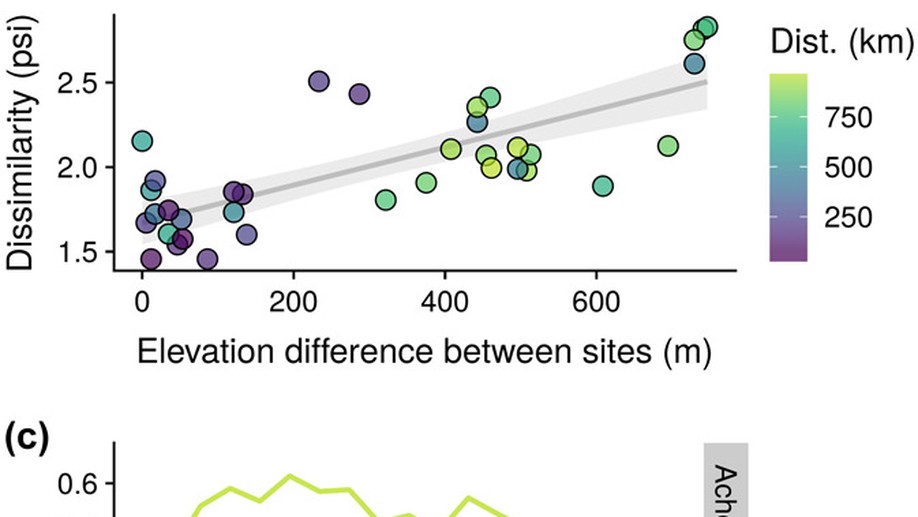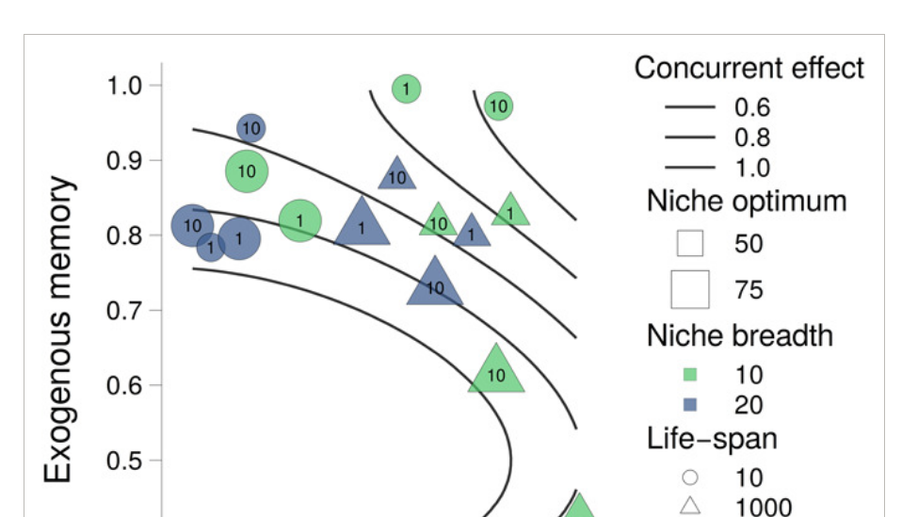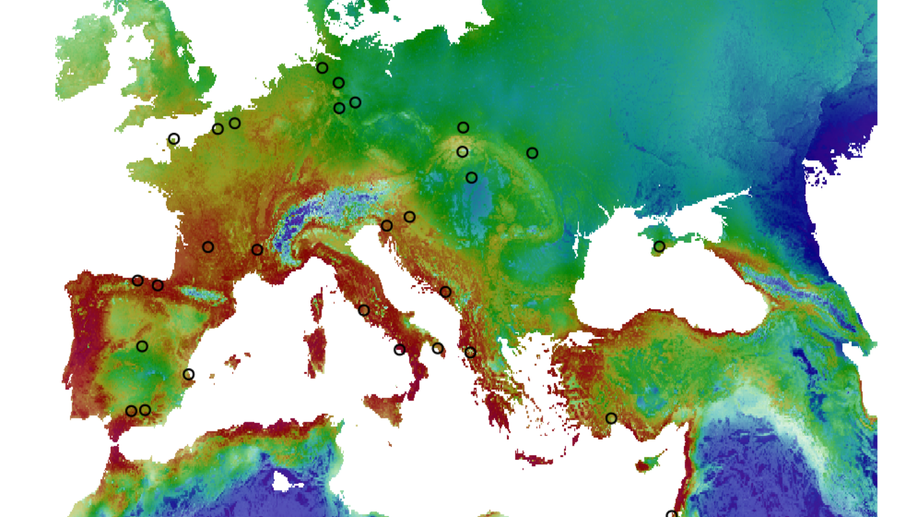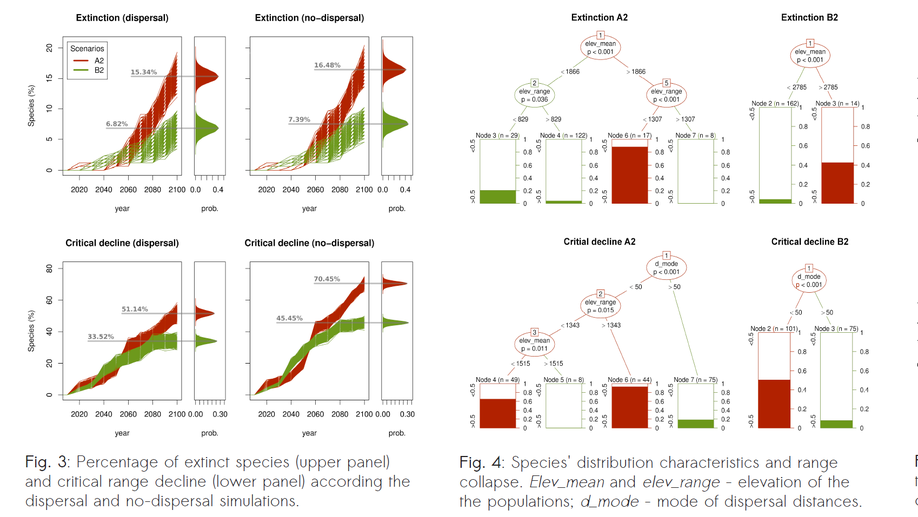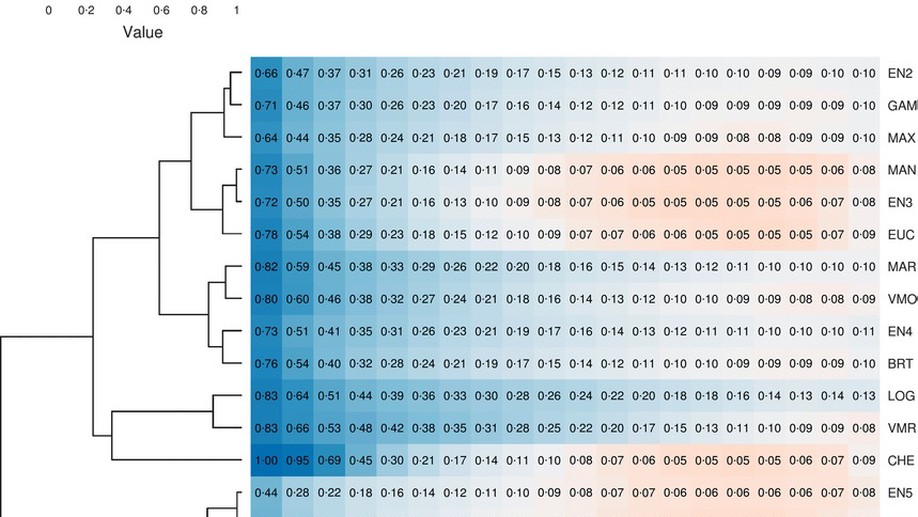Bio
Hello there!
My name is Blas, and I am a spatial data scientist and engineer in AgTech, holding a PhD in computational ecology and an MSc in geographic information systems.
My expertise lies at the intersection of spatial and temporal modeling, soil and plant ecology, remote sensing, machine learning, and environmental dynamics and monitoring.
My work
I’m deeply passionate about crafting automated data and modeling pipelines to tackle complex environmental challenges.
Currently, I lead the Environmental Data Team at Biome Makers Inc. In this role, I research and develop cutting-edge smart farming technologies, create essential R packages to enhance our Data Science Department’s capabilities, and oversee the design and maintenance of an environmental data infrastructure to further empower our flagship product, BeCrop®.
My Tech Stack
My tech stack is built entirely on open-source tools: I rely on R and git+ GitHub for collaborative software development and version control. For pipeline design, I harness the power of targets, and to encapsulate code I employ renv and docker.
For GIS tasks, I turn to industry-standard tools like GRASS GIS, Quantum GIS, and PostGIS.
My data management and processing are handled by PostgreSQL, DuckDB, Apache Arrow, and Apache Spark.
Computationally-intensive pipelines find their home in my tiny Beowulf Cluster managed by slurm.
For developing and deploying REST APIs, I turn to plumber, while interactive apps are crafted with Shiny. My interactive reports come to life using either Rmarkdown or Quarto.
My Academic Journey
Before delving into AgTech, I honed my research and technical skills during a successful academic career in Computational Ecology. I worked in world-class labs in Spain ( IISTA and Maestre Lab), Denmark ( Jens-Christian Svenning Lab), and Norway ( EECRG).
My research primarily focused on unveiling the environmental drivers shaping the distribution of biological diversity in space and time. During this journey, I developed scientific R packages for various purposes, such as time-series comparison and analysis of lagged effects, spatial modeling with Random Forest, and ecological simulation.
Throughout this journey, I collaborated with 210 esteemed coauthors from 22 countries to publish 49 research papers in reputable peer-reviewed journals. To date, our collective work has garnered over 1600 citations. Notably, three of these papers have received recognition as ‘most downloaded papers’ in prestigious journals, and two have been honored as ‘editor’s picks’.
Beyond Work
In my leisure time, I cherish moments with my family, tinker on the piano with enthusiasm (regardless of the results!), embrace the serenity of the sea on my stand-up paddle board, and continue my passion for developing R packages.
Connect with Me
I’m always eager to connect with fellow data enthusiasts, researchers, and professionals. Feel free to connect with me on LinkedIn to explore potential collaborations and discussions within our shared field.
Interests
- Spatial Data Science and Engineering
- Ecology of the soil microbiome
- Soil/crop mapping and modeling
- Machine Learning and Remote Sensing in AgTech
- Scientific code development
- Automated data and modeling pipelines
Education
-
Ph.D. in Computational Ecology, 2006 - 2009
University of Granada
-
UNIGIS International Masters Degree in Geographical Information Sys-tems, 2007 - 2009
University of Girona
-
Masters Degree in Management and Environmental Auditing, 2005 - 2006
University of Cadiz
-
Degree in Biology, 1999 - 2003
University of Granada

